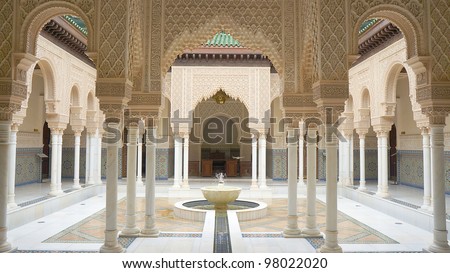
Dar, the name given to one of the most common types of national structures in Morocco, is a house found in a medina, or walled urban area of the city. Most Moroccan homes always adhere to the Dar al-Islam, a set of principles on Islamic domestic life.

Outside Dar are generally devoid of ornamentation and windows, with the exception of occasional small openings in secondary areas such as stairs and service areas. These piercings provide light and ventilation. Dars are typically composed of thick walls that protect people flying, animals, and other risks, but they have a much more symbolic of Arab perspective. In this culture from the outside is a workplace, while the interior is a place of refuge. Thus, Moroccan interiors are often very generous in decoration and crafts.

According to most Islamic architecture, dars are based around small outdoor patios, surrounded by thick very high walls to block direct light and minimize heat.Intermediary three-arched porticos lead to usually two to four parts located symmetrically. These parts should be long and narrow, creating very vertical spaces, as regional resources and construction technology in general allow joists are usually less than three feet.


Entering a dar, customers move through a passage zigzag cover the central courtyard. The passage opens onto a staircase leading to a reception area on the first floor called dormiria, which is often the most sumptuous room to house decorated decorative tile, painted furniture, and lots of embroidered pillows and rugs . Wealthier families also have greenhouses and a second dormiria, accessible by a staircase walk-in. Three services and stairs were still in the corners of the structures.





morocco culture,moroccan food,morocco food,moroccan cuisine,morocco beaches,moroccan meal,beaches in morocco,moroccan culture,hercules cave,hercules cave morocco